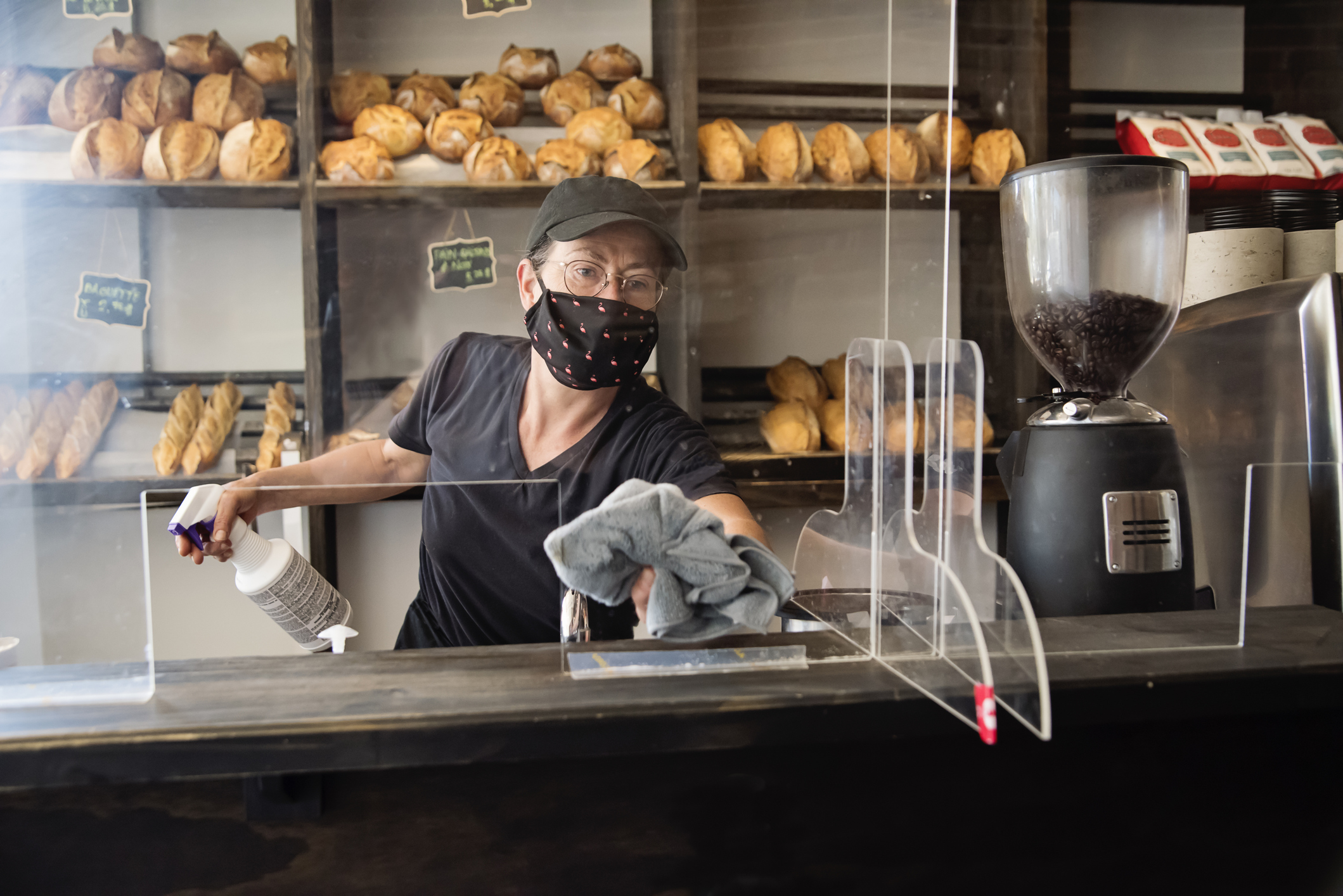Canadian Workers Suffered Under COVID While Their Bosses Made a Killing
By the time they clocked out for lunch on January 4, Canada’s most lavishly paid CEOs had already made the average worker’s annual salary. It’s yet another reminder of the unequal burdens borne during the pandemic.

Bakery owner wiping down surfaces during the COVID pandemic. (Martine Doucet / Getty Images)
Every year, the Canadian Centre for Policy Alternatives (CCPA) tracks the compensation of Canada’s most lavishly paid executives. And every year, it releases a version of the same eye-popping statistic: namely, how much of the new year it is estimated to take the wealthiest executives to earn what a typical worker will make over the next twelve months. According to the center’s analysis of 2020 wage data, released earlier this month, Canada’s hundred highest paid CEOs took home an average of $10.9 million in 2020 — an increase since 2019, even as both Canadian society and the global economy were rocked by the first wave of the pandemic.
The result? The country’s top executives now make roughly 191 times that of the average Canadian worker, meaning that they had pocketed what millions will make this year before lunchtime on January 4. (This ratio, believe it or not, is actually narrower than it’s been since 2014. But, as CCPA senior economist David Macdonald explains, the reason is that so many low-wage workers lost their jobs in 2020 that the average worker wage is somewhat misleadingly skewed upward when many of those who are typically among the lowest paid are excluded.)
Most strikingly, high rates of CEO pay persisted even amid the most severe economic retrenchment since the Great Depression of the 1930s — as sure a sign as any that those at the top of the corporate ladder are basically impervious to the kinds of shocks and disruptions that millions were subjected to when the pandemic hit. For some half of workers earning $17 an hour or less, Macdonald notes, 2020 brought with it either unemployment or reduced working hours.
Though Canada’s federal government did offer income support in the form of measures like the Canada Emergency Response Benefit (CERB), businesses were amply supported as well. And, as the CCPA’s analysis finds, plenty of huge companies that took in public cash also count their executives among the most highly paid (of the hundred most lavishly compensated CEOs, Macdonald reveals that thirty-five belonged to companies that received federal relief funds).
Some companies technically cut executive pay in 2020. But, as has long been the case at many large firms, base salary only forms a small part of what many actually take home in compensation. As Macdonald writes:
The overwhelming amount of CEO compensation comes from various types of bonuses. There were 23 of the highest-paid 100 CEOs who had COVID-19 related salary cuts. However, almost half of them saw their pay exceed the previous year’s amount because the drop in salaries was more than offset by increases in bonuses.
One of the greatest ironies of modern capitalism is that many of the staunchest advocates for so-called free market economics have successfully shielded themselves from market forces altogether. 2020 may have been a tough year for workers and businesses alike but, as the CCPA’s analysis shows, the most elite managers in Canada’s corporate world were still able to secure a raise even as workers were furloughed and storefronts were shuttered.
If the case for implementing a steep wealth tax and closing absurd loopholes used almost exclusively by the rich wasn’t clear before the pandemic, the past eighteen months has made it as basically irrefutable.